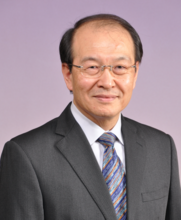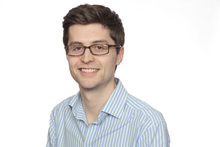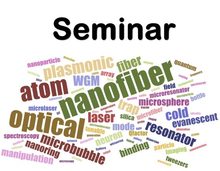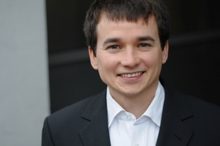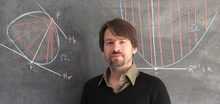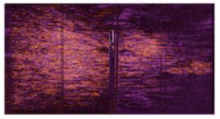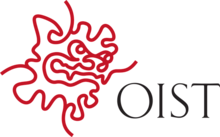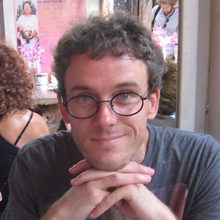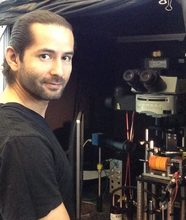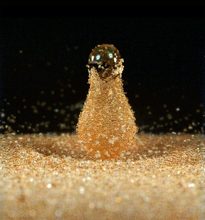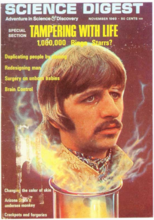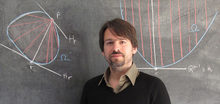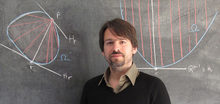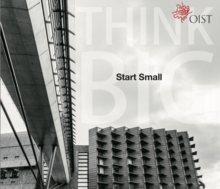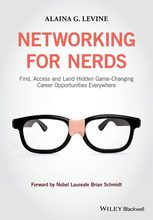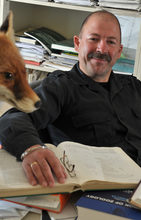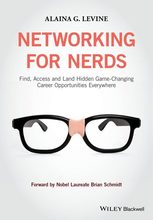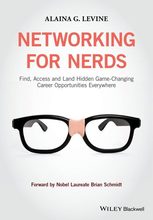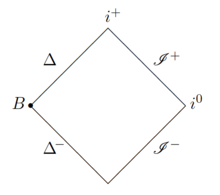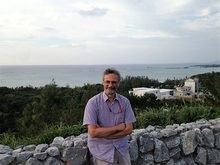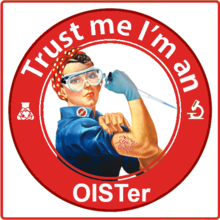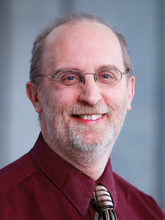Past Events
Seminar: "Melonic turbulence" by Mr. Guillaume Valette
Speaker: Mr. Valette is currently in his last year as a Ph.D. student at Univ. Libre de Bruxelles, Belgium.
Cover Letter Writing for Scientists
This session will give hands-on practice and tips for writing a cover letter in the sciences. It is aimed at interns and Ph.D students, but all are welcome. Session provided by Margaret Howell of OIST's Language Education Section.
Theoretical Physics Seminar: Yasha Neiman & Juan-David Vasquez-Jaramillo
Theoretical Physics Seminar. Speaker 1: Yasha Neiman (Quantum Gravity), "What does a spinor look like?" Speaker 2: Juan-David Vasquez-Jaramillo (Quantum Transport and Electronic Structure Theory), "Can we control the interactions among individual magnetic dopants in metallic surfaces?"
Seminar: "Navigating scholarly publishing in a sea of change"
This talk provides an overview of these changes and touches on the possible consequences of new initiatives, which can be applied by researchers in their roles as authors, readers, referees and editors.
Everyone is welcom! No registration is required![Geometry, Topology and Dynamics Seminar] Robust chaos: a tale of blenders, their computation, and their destruction by Dr. Hinke Osinga (University of Auckland)
A blender is an intricate geometric structure of a three- or higher-dimensional diffeomorphism. Its characterising feature is that its invariant manifolds behave as geometric objects of a dimension that is larger than expected from the dimensions of the manifolds themselves. We introduce a family of three-dimensional Hénon-like maps and study how it gives rise to an explicit example of a blender. The map has two saddle fixed points. Their associated stable and unstable manifolds consist of points for which the sequence of images or pre-images converges to one of the saddle points; such points lie on curves or surfaces, depending on the number of stable eigenvalues of the Jacobian at the saddle points. We employ advanced numerical techniques to compute one-dimensional stable and unstable manifolds to very considerable arclengths. In this way, we not only present the first images of an actual blender but also obtain a convincing numerical test for the blender property. This allows us to present strong numerical evidence for the existence of the blender over a larger parameter range, as well as its disappearance and geometric properties beyond this range. We will also discuss the relevance of the blender property for chaotic attractors; joint work with Stephanie Hittmeyer and Bernd Krauskopf (University of Auckland) and Katsutoshi Shinohara (Hitotsubashi University).
Dynamic regulation of inhibition of T cell activation
"Dr. Takashi Saito, Team Leader, RIKEN. Language: English, no interpretation."
Phenotype to Function: Predicting compound mode of action from behavioural fingerprints
Prof. Andre Brown, MRC London Institute of Medical Sciences at Imperial College London
[Geometry, Topology and Dynamics Seminar] Global manifolds and the transition to chaos in the Lorenz system by Dr. Bernd Krauskopf (University of Auckland)
The Lorenz system still fascinates many people because of the simplicity of the equations that generate such complicated dynamics on the famous butterfly attractor. This talk addresses the role of the stable and unstable manifolds in organising the dynamics more globally. A main object of interest is the stable manifold of the origin of the Lorenz system, also known as the Lorenz manifold. This two-dimensional manifold and associated manifolds of saddle periodic orbits can be computed accurately with numerical methods based on the continuation of orbit segments, defined as solutions of suitable two-point boundary value problems. We use these techniques to give a precise geometrical and topological characterisation of global manifolds during the transition from simple dynamics, via preturbulence to chaotic dynamics, as the Rayleigh parameter of the Lorenz system is increased; joint work with Hinke Osinga (University of Auckland) and Eusebius Doedel (Concordia University, Montreal).
"Network architecture underlying sparse neural activity characterized by structured higher-order interactions", Hideaki Shimazaki, Kyoto University
Dr. Hideaki Shimazaki, Program-specific Associate Professor at Kyoto University
Seminar by Dr Yong Yang 'Group delay and its dispersion in SNAP resonators'
Speaker: Dr Yong Yang, Senior Research Fellow, Aston University, UK
Seminar "New life for old bones - medical aDNA research"
Seminar by Prof. Krause-Kyora (Institute of Clinical Molecular Biology, Kiel University)
Mini-course: "Quantum Models for Black Holes: Sachdev-Ye-Kitaev and generalizations" by Prof. Frank Ferrari
Speaker: Prof. Ferrari is based at the Department of Physics, Université Libre de Bruxelles. Aim: To introduce recently developed ideas and techniques on the SYK models and generalizations.
OTV『世界一受けたい授業』放送日
Nihon TV's popular entertainment program "The Most Useful School in the World," in which Provost Mary Collins introduces OIST will be broadcast in Okinawa!
OISTが紹介された、日本テレビ「世界一受けたい授業」が県内で放送されます。
Science Project for Ryukyu Girls: Science Camp -vol.8-
Science Project for Ryukyu Girls / Science Camp -vol.8- / Female Junior high and high school students in Okinawa can apply. Accommodation fee and the airfare fee will be supported.
[Geometry, Topology and Dynamics Seminar] Tropical geometry, normal surfaces and the character variety by Stephan Tillmann (University of Sydney)
[Geometry, Topology and Dynamics Seminar] Tropical geometry, normal surfaces and the character variety by Stephan Tillmann (University of Sydney)
Journal club seminar: A universal transition to turbulence in channel flow
3D modeling workshop
This workshop will cover the fundamentals of computer vision and structure-from-motion photogrammetry and how they are applied to coral reef biology and ecology.
To register CLICK HERE
[Geometry, Topology and Dynamics Seminar] Topology on tiny machines: logspace and finite-state complexity by Ben Burton (University of Queensland)
[Geometry, Topology and Dynamics Seminar] Topology on tiny machines: logspace and finite-state complexity by Dr. Ben Burton (University of Queensland)
Seminar by Dr Luis Carrillo Reid "Manipulation of behavioral performance induced by targeted activation of cortical ensembles"
Dr Carrillo Reid got his Ph.D. from UNAM in Mexico City and then did postdoc studies in OIST: in Northwestern, Chicago: and finally in NYU, New York; before leaving last year to set up his own laboratory in Mexico.
Seminar "Impact response of granular materials: From the origin of the universe to catastrophic asteroid strikes" by Prof. Xiang Cheng
Seminar by Prof. Xiang Cheng, Department of Chemical Engineering and Materials Science, University of Minnesota
Possible role of ADF/cofilin in fission yeast cytokinesis
"Dr. Issei Mabuchi, Visiting Professor, The University of Tokyo. Language: English, no interpretation."
Science Digest: "Kinematic Signatures of Cannabinoids"
Bogna Ignatowska-Jankowska, Research Fellow (Uusisaari Unit). Bring your own lunch.
[Seminar] Functional organization of the cerebellum during motor learning in mice by Professor Javier F Medina
Title : Functional organization of the cerebellum during motor learning in mice
Speaker : Professor Javier F Medina
Affiliation : Baylor College of Medicine
[Geometry, Topology and Dynamics Seminar] Essential surfaces detected by the character variety by Stephan Tillmann (University of Sydney)
[Geometry, Topology and Dynamics Seminar] Essential surfaces detected by the character variety by Stephan Tillmann (University of Sydney)
"Sharp-wave ripple production and coordination in sleeping dragons"by Dr. Hiroaki Norimoto, MPI for Brain Research
Speaker: Dr. Hiroaki Norimoto Lab for Neural Systems, Max Planck Institute for Brain Research
Title: Sharp-wave ripple production and coordination in sleeping dragons
[Geometry, Topology and Dynamics Seminar] Character varieties, ideal points and actions on trees by Stephan Tillmann (University of Sydney)
[Geometry, Topology and Dynamics Seminar] Character varieties, ideal points and actions on trees by Dr. Stephan Tillmann (University of Sydney)
Seminar "Thermal Hall effect from neutral currents in quantum magnets" by Dr. Max Hirschberger
Seminar hosted by TQM unit
The 16th International Membrane Research Forum - OIST Joint Minisymposium
OIST Minisymposium
The 16th International Membrane Research Forum
OIST members are welcome to attend all scientific sessions - Website: https://groups.oist.jp/imrf
OIST minisymposium - The 16th International Membrane Research Forum
Pakistani Chicken Korma
Dear Foodies :) Next class will be Pakistani Kitchen with "Chiken Korma with Rice " The chef will be Afshan Jamshaid The class will be on 16th March Saturday at 6pm in the Community Kitchen. Kindly confirm your availability for placing the order.
Luis Ono, Organic-Inorganic Hybrid Perovskite Solar Cell Research
Internal Seminar Series
Ivan Mbogo, The Molecular and Functional Evolution of the Beta-Catenin Transcriptional Machinery
Internal Seminar Series
Science Challenge Final Presentations
The Science Challenge is a week-long event where we invite 31 Japanese and international undergrad students to experience the way science is done in OIST.
Throughout the week, among many activities, they will be working on a 4-minute presentation about this year's theme: "Think big, start small".
Come take a peek at what the future of Japanese science will be like.
Neural Computation Workshop 2019
Neural Computation Unit will hold a retreat/reunion at Seaside House. If you are interested in joining, pleaese contact ncus@oist.jp
Workshop: "Optimize your Conference Experience"
Discover how to get the most out of attending an academic or industry conference.
Everyone is welcome!Insect morphology in the age of phylogenomics
Speaker: Prof. Rolf G. Beutel, FSU Jena, Institut für Zoologie und Evolutionsforschung, Germany
Workshop: "Marketing your value in a global environment to advance your career"
In this workshop, you will learn the strategies for communicating your ideas and brand (your promise of value) in such a way that your constituents want to learn more and can visualize how your innovative attitude will benefit them.
Everyone is welcome!Identification of a novel p53 downstream pathway important in neuroendocrine tumor development
"Dr. Rieko Ohki, Laboratory Head, National Cancer Center Research Institute. Language: English, no interpretation."
Workshop: "Networking for Nerds"
Discover how networking and self-promotion can enable you to land or even create your dream job from scratch!
Everyone is welcome! Post-event survey SUMMARYNew Postdoc Orientation
Details are coming soon...
QG group meeting: Black Hole Entropy from 2d Dilation Gravity
Quantum Gravity Group Meeting
Title: Black Hole Entropy from 2d Dilation Gravity.
Speaker : Vyacheslav Lysov, Quantum Gravity Unit (Neiman)
Seminar: "Progresses on the lesson we learn about (quantum) gravity from quantum matter" by Mr. Riccardo Martini
Speaker: Mr. Martini is currently in his last year as a Ph.D. student at University of Jena, Germany.
[Seminar] "Quantum Black Hole Entropy from 4d Supersymmetric Cardy formula" by Dr. Masazumi Honda
Speaker: Dr. Masazumi Honda, University of Cambridge
Seminar "Topological magnons in Kitaev magnets at high fields" by Prof. Karlo Penc
host by TQM unit
Seminar: "Functional Renormalization Group analysis of Tensorial Group Field Theories" by Mr. Riccardo Martini
Speaker: Mr. Martini is currently in his last year as a Ph.D. student at University of Jena, Germany.
Researcher Survey
Make your voice heard! Complete the Researcher Survey.
Mathematical Physics seminar: Chern-Simons theory 3
Joint Math and Theoretical physics seminar on Chern-Simons theory, Knot invariants and Volume conjecture. Vyacheslav Lysov will be leading the discussion.
[Seminar] "Design and evolution of artificial enzymes" by Prof. Donald Hilvert, ETH Zurich
Prof. Donald Hilvert, Laboratory of Organic Chemistry, ETH Zürich, Zurich, Switzerland.
Language: English







